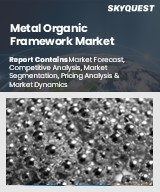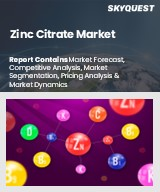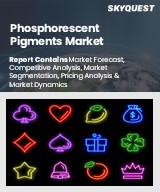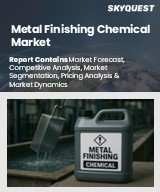
|
시장보고서
상품코드
1576777
세계의 아연 도금 시장 : 용도, 유형 및 최종 사용 산업별 예측(2025-2030년)Galvanizing Market by Application (Automotive, Construction, Consumer Goods), Type (Cold Galvanizing, Continuous Galvanizing, Electro Galvanizing), End-Use Industry - Global Forecast 2025-2030 |
||||||
2023년 아연 도금 시장 규모는 983억 7,000만 달러로 2024년에는 1,047억 3,000만 달러에 달할 것으로 예상되며, CAGR 7.32%로 성장하여 2030년에는 1,613억 8,000만 달러에 달할 것으로 예상됩니다.
아연도금은 강철과 철을 아연층으로 코팅하여 부식을 방지하고 금속 구조물의 수명을 연장하는 것으로, 다양한 분야에서 중요한 역할을 하고 있습니다. 아연 도금의 필요성은 내구성 향상, 유지보수 비용 절감 및 수명 연장의 필요성에서 비롯되며, 특히 건설, 자동차 및 인프라 분야에서 아연 도금의 필요성이 증가하고 있습니다. 최종 사용 산업에는 주거, 상업, 산업 건설, 자동차 제조, 에너지 분야 등이 포함됩니다. 시장 인사이트에 따르면, 아연 도금 시장은 전 세계 도시화, 산업화 및 신흥 시장의 인프라 구축 증가에 의해 주도되고 있습니다. 경량 차량과 지속 가능한 에너지 솔루션에 대한 수요는 잠재적인 성장 기회를 제공합니다. 또한, 혁신적이고 효율적이며 환경 친화적인 아연 도금 공정을 제공하는 기술 발전도 시장에 영향을 미치고 있습니다. 그러나 불안정한 원자재 가격, 환경 규제, 대체 보호 기술과의 경쟁은 시장 성장을 저해하는 요인으로 작용할 수 있습니다. 균일한 두께를 유지하고 유해한 제품별 처리의 복잡성은 기술적 과제가 되고 있습니다. 환경 친화적인 방법의 개발, 품질 관리 기술 향상, 효율성 향상을 위한 고도의 자동화 시스템 등 기술 혁신이 필요한 분야가 있습니다. 기업들은 새로운 아연 합금 개발을 위한 연구에 투자하고, 인프라가 빠르게 발전하고 있는 신흥국 시장에서 사업 기회를 모색해야 합니다. 시장 경쟁력을 강화하기 위해서는 코팅의 성능을 향상시키면서 공정 비용을 혁신적으로 줄여야 합니다. 성장하고자 하는 기업들은 품질 향상, 고객 서비스, 지속 가능한 관행에 집중하는 것이 필수적입니다. 연구 기관과 협력하여 최첨단 보호 코팅 솔루션을 개발하면 큰 경쟁 우위를 확보할 수 있습니다. 시장을 효과적으로 탐색하기 위해 이해 관계자들은 규제 변화와 기술 발전에 적응하고 지속 가능하고 내구성이 뛰어나며 비용 효율적인 솔루션에 대한 수요 증가에 대응해야 합니다.
| 주요 시장 통계 | |
|---|---|
| 기준연도(2023년) | 983억 7,000만 달러 |
| 예측 연도(2024년) | 1,047억 3,000만 달러 |
| 예측 연도(2030년) | 1,613억 8,000만 달러 |
| CAGR(%) | 7.32% |
시장 역학 : 빠르게 진화하는 아연 도금 시장의 주요 시장 인사이트 공개
아연 도금 시장은 수요 및 공급의 역동적인 상호작용으로 인해 변화하고 있습니다. 이러한 시장 역학의 진화를 이해함으로써 기업은 정보에 입각한 투자 결정을 내리고, 전략적 의사결정을 정교화하며, 새로운 비즈니스 기회를 포착할 수 있습니다. 이러한 트렌드를 종합적으로 파악함으로써 기업은 정치적, 지리적, 기술적, 사회적, 경제적 영역 전반에 걸친 다양한 리스크를 줄일 수 있으며, 소비자 행동과 그것이 제조 비용 및 구매 동향에 미치는 영향을 보다 명확하게 이해할 수 있습니다.
- 시장 성장 촉진요인
- 건설 및 자동차 산업에서 내식성 재료에 대한 수요 증가
- 신흥 경제국가의 인프라 구축 및 산업화 활동 확대
- 지속가능하고 친환경적인 솔루션 사용을 촉진하는 환경 규제 강화
- 시장 성장 억제요인
- 아연 도금 산업의 생산 비용에 영향을 미치는 불안정한 원자재 가격
- 시장 기회
- 내구성이 강한 아연도금 자재를 필요로 하는 재생 가능 에너지 프로젝트 증가를 활용
- 아연 도금 강판 수요에 대한 도시 지역의 건설 활동 증가 활용
- 시장 과제
- 아연도금 공정과 관련된 기술적 및 운영상의 제약
Porter's Five Forces : 아연 도금 시장을 탐색하는 전략적 도구
Portre's Five Forces 프레임워크는 시장 상황경쟁 구도를 이해하는 중요한 도구입니다. Portre's Five Forces 프레임워크는 기업의 경쟁력을 평가하고 전략적 기회를 탐색할 수 있는 명확한 방법을 제공합니다. 이 프레임워크는 기업이 시장 내 세력도를 평가하고 신규 사업의 수익성을 판단하는 데 도움이 됩니다. 이러한 통찰력을 통해 기업은 강점을 활용하고, 약점을 해결하고, 잠재적인 도전을 피하고, 보다 강력한 시장 포지셔닝을 확보할 수 있습니다.
PESTLE 분석 : 아연 도금 시장의 외부 영향 파악
외부 거시 환경 요인은 아연 도금 시장의 성과 역학을 형성하는 데 매우 중요한 역할을 합니다. 정치적, 경제적, 사회적, 기술적, 법적, 환경적 요인에 대한 분석은 이러한 영향을 탐색하는 데 필요한 정보를 제공하며, PESTLE 요인을 조사함으로써 기업은 잠재적 위험과 기회를 더 잘 이해할 수 있습니다. 이러한 분석을 통해 기업은 규제, 소비자 선호도, 경제 동향의 변화를 예측하고 선제적이고 능동적인 의사결정을 내릴 준비를 할 수 있습니다.
시장 점유율 분석 아연 도금 시장에서경쟁 구도 파악
아연 도금 시장의 상세한 시장 점유율 분석을 통해 공급업체의 성과를 종합적으로 평가할 수 있습니다. 기업은 수익, 고객 기반, 성장률과 같은 주요 지표를 비교하여 경쟁적 위치를 파악할 수 있습니다. 이 분석은 시장의 집중화, 단편화, 통합의 추세를 파악할 수 있으며, 공급업체는 치열한 경쟁 속에서 자신의 입지를 강화할 수 있는 전략적 의사결정을 내리는 데 필요한 통찰력을 얻을 수 있습니다.
FPNV 포지셔닝 매트릭스 아연 도금 시장에서 벤더의 성능 평가
FPNV 포지셔닝 매트릭스는 아연 도금 시장에서 공급업체를 평가하는 중요한 도구입니다. 이 매트릭스를 통해 비즈니스 조직은 벤더의 비즈니스 전략과 제품 만족도를 기반으로 벤더를 평가하여 목표에 부합하는 정보에 입각한 의사결정을 내릴 수 있으며, 4개의 사분면으로 벤더를 명확하고 정확하게 세분화하여 전략 목표에 가장 적합한 파트너와 솔루션을 식별할 수 있습니다. 전략 목표에 가장 적합한 파트너와 솔루션을 식별할 수 있습니다.
전략 분석 및 추천 아연 도금 시장에서 성공의 길을 그리는 방법
아연 도금 시장 전략 분석은 세계 시장에서의 입지를 강화하고자 하는 기업에게 필수적입니다. 주요 자원, 역량 및 성과 지표를 검토함으로써 기업은 성장 기회를 식별하고 개선할 수 있습니다. 이러한 접근 방식을 통해 경쟁 환경의 도전을 극복하고 새로운 비즈니스 기회를 활용하여 장기적인 성공을 거둘 수 있도록 준비할 수 있습니다.
이 보고서는 주요 관심 분야를 포괄하는 시장에 대한 종합적인 분석을 제공합니다.
1. 시장 침투도 : 현재 시장 환경의 상세한 검토, 주요 기업의 광범위한 데이터, 시장 도달 범위 및 전반적인 영향력 평가.
2. 시장 개척도: 신흥 시장에서의 성장 기회를 파악하고, 기존 분야의 확장 가능성을 평가하며, 미래 성장을 위한 전략적 로드맵을 제공합니다.
3. 시장 다각화 : 최근 제품 출시, 미개척 지역, 업계의 주요 발전, 시장을 형성하는 전략적 투자를 분석합니다.
4. 경쟁 평가 및 정보 : 경쟁 구도를 철저히 분석하여 시장 점유율, 사업 전략, 제품 포트폴리오, 인증, 규제 당국의 승인, 특허 동향, 주요 기업의 기술 발전 등을 검토합니다.
5. 제품 개발 및 혁신 : 미래 시장 성장을 가속할 것으로 예상되는 첨단 기술, 연구 개발 활동 및 제품 혁신을 강조합니다.
이해관계자들이 충분한 정보를 바탕으로 의사결정을 내릴 수 있도록 다음과 같은 중요한 질문에 대한 답변도 제공합니다.
1. 현재 시장 규모와 향후 성장 전망은?
2. 최고의 투자 기회를 제공하는 제품, 부문, 지역은?
3. 시장을 형성하는 주요 기술 동향과 규제의 영향은?
4. 주요 벤더의 시장 점유율과 경쟁 포지션은?
5.벤더 시장 진입 및 철수 전략의 원동력이 되는 수익원과 전략적 기회는 무엇인가?
목차
제1장 서문
제2장 조사 방법
제3장 주요 요약
제4장 시장 개요
제5장 시장 인사이트
- 시장 역학
- 성장 촉진요인
- 성장 억제요인
- 기회
- 과제
- 시장 세분화 분석
- Porter의 Five Forces 분석
- PESTEL 분석
- 정치적
- 경제
- 사교
- 기술적
- 법률상
- 환경
제6장 아연 도금 시장 : 용도별
- 자동차
- 건설
- 상업
- 산업
- 주택
- 소비재
- 에너지
- 인프라
제7장 아연 도금 시장 : 유형별
- Cold Galvanizing
- Continuous Galvanizing
- Electro Galvanizing
- General Galvanizing
- Hot-Dip Galvanizing
제8장 아연 도금 시장 : 최종 이용 산업별
- 자동차 및 운송
- 상용차
- 승용차
- 철도 운송
- 건축 및 건설
- 다리 및 고속도로
- 상업 빌딩
- 에너지 및 전력 구조
- 주택
- 산업
- 장비
- 기계
- 유틸리티
제9장 아메리카의 아연 도금 시장
- 아르헨티나
- 브라질
- 캐나다
- 멕시코
- 미국
제10장 아시아태평양의 아연 도금 시장
- 호주
- 중국
- 인도
- 인도네시아
- 일본
- 말레이시아
- 필리핀
- 싱가포르
- 한국
- 대만
- 태국
- 베트남
제11장 유럽, 중동 및 아프리카의 아연 도금 시장
- 덴마크
- 이집트
- 핀란드
- 프랑스
- 독일
- 이스라엘
- 이탈리아
- 네덜란드
- 나이지리아
- 노르웨이
- 폴란드
- 카타르
- 러시아
- 사우디아라비아
- 남아프리카공화국
- 스페인
- 스웨덴
- 스위스
- 터키
- 아랍에미리트(UAE)
- 영국
제12장 경쟁 구도
- 시장 점유율 분석, 2023년
- FPNV 포지셔닝 매트릭스, 2023년
- 경쟁 시나리오 분석
- 전략 분석과 제안
기업 리스트
- 1. AK Steel Holding Corporation
- 2. ArcelorMittal
- 3. Baosteel Group
- 4. China Steel Corporation
- 5. Essar Steel
- 6. Hyundai Steel Company
- 7. JFE Steel Corporation
- 8. JSW Steel Ltd.
- 9. Liberty House Group
- 10. Maanshan Iron & Steel Company
- 11. Nippon Steel Corporation
- 12. Nucor Corporation
- 13. POSCO
- 14. Salzgitter AG
- 15. Severstal
- 16. Shougang Group
- 17. Tata Steel
- 18. Thyssenkrupp AG
- 19. United States Steel Corporation
- 20. Voestalpine AG
The Galvanizing Market was valued at USD 98.37 billion in 2023, expected to reach USD 104.73 billion in 2024, and is projected to grow at a CAGR of 7.32%, to USD 161.38 billion by 2030.
Galvanizing involves coating steel or iron with a layer of zinc to protect it from corrosion, extending the lifespan of metal structures, making it critical across multiple sectors. The necessity of galvanizing stems from the need to enhance durability, reduce maintenance costs, and improve longevity, particularly in construction, automotive, and infrastructure applications. End-use industries include residential, commercial, and industrial construction, automotive manufacturing, and the energy sector, among others. Market insights reveal that the galvanizing market is driven by urbanization, industrialization, and the increasing infrastructure development worldwide. The demand for lightweight vehicles and sustainable energy solutions offers potential opportunities for growth. The market is also influenced by evolving technological advancements that offer innovative, efficient, and environmentally friendly galvanizing processes. However, challenges such as volatile raw material prices, environmental regulations, and competition from alternative protection technologies can potentially hinder market growth. The complexity of maintaining uniform coating thickness and dealing with hazardous by-products poses technical challenges. Areas ripe for innovation include the development of eco-friendly galvanizing methods, improvement in technology for quality control, and advanced automation systems for efficiency. Companies should invest in research to develop new zinc alloys and explore opportunities in emerging markets where infrastructure development is burgeoning. Market competitiveness drives the need to innovatively reduce the cost of galvanizing processes while enhancing coating performance. For businesses aiming for growth, focusing on quality improvement, customer service, and sustainable practices will be essential. Collaborating with research institutions to develop cutting-edge solutions for protective coatings can offer significant competitive advantages. To navigate the market effectively, stakeholders must adapt to regulatory changes and technological advancements, aiming to meet the increasing demand for sustainable, durable, and cost-effective solutions in galvanizing.
| KEY MARKET STATISTICS | |
|---|---|
| Base Year [2023] | USD 98.37 billion |
| Estimated Year [2024] | USD 104.73 billion |
| Forecast Year [2030] | USD 161.38 billion |
| CAGR (%) | 7.32% |
Market Dynamics: Unveiling Key Market Insights in the Rapidly Evolving Galvanizing Market
The Galvanizing Market is undergoing transformative changes driven by a dynamic interplay of supply and demand factors. Understanding these evolving market dynamics prepares business organizations to make informed investment decisions, refine strategic decisions, and seize new opportunities. By gaining a comprehensive view of these trends, business organizations can mitigate various risks across political, geographic, technical, social, and economic domains while also gaining a clearer understanding of consumer behavior and its impact on manufacturing costs and purchasing trends.
- Market Drivers
- Increasing demand for corrosion-resistant materials in the construction and automotive industries
- Growing infrastructure development and industrialization activities across emerging economies
- Rising environmental regulations promoting the use of sustainable and eco-friendly galvanizing solutions
- Market Restraints
- Volatile raw material prices affecting production costs for galvanizing industry
- Market Opportunities
- Capitalizing on the rise of renewable energy projects requiring durable galvanized materials
- Leveraging increased construction activities in urban areas for galvanized steel demand
- Market Challenges
- Technological and operational constraints associated with galvanizing processes
Porter's Five Forces: A Strategic Tool for Navigating the Galvanizing Market
Porter's five forces framework is a critical tool for understanding the competitive landscape of the Galvanizing Market. It offers business organizations with a clear methodology for evaluating their competitive positioning and exploring strategic opportunities. This framework helps businesses assess the power dynamics within the market and determine the profitability of new ventures. With these insights, business organizations can leverage their strengths, address weaknesses, and avoid potential challenges, ensuring a more resilient market positioning.
PESTLE Analysis: Navigating External Influences in the Galvanizing Market
External macro-environmental factors play a pivotal role in shaping the performance dynamics of the Galvanizing Market. Political, Economic, Social, Technological, Legal, and Environmental factors analysis provides the necessary information to navigate these influences. By examining PESTLE factors, businesses can better understand potential risks and opportunities. This analysis enables business organizations to anticipate changes in regulations, consumer preferences, and economic trends, ensuring they are prepared to make proactive, forward-thinking decisions.
Market Share Analysis: Understanding the Competitive Landscape in the Galvanizing Market
A detailed market share analysis in the Galvanizing Market provides a comprehensive assessment of vendors' performance. Companies can identify their competitive positioning by comparing key metrics, including revenue, customer base, and growth rates. This analysis highlights market concentration, fragmentation, and trends in consolidation, offering vendors the insights required to make strategic decisions that enhance their position in an increasingly competitive landscape.
FPNV Positioning Matrix: Evaluating Vendors' Performance in the Galvanizing Market
The Forefront, Pathfinder, Niche, Vital (FPNV) Positioning Matrix is a critical tool for evaluating vendors within the Galvanizing Market. This matrix enables business organizations to make well-informed decisions that align with their goals by assessing vendors based on their business strategy and product satisfaction. The four quadrants provide a clear and precise segmentation of vendors, helping users identify the right partners and solutions that best fit their strategic objectives.
Strategy Analysis & Recommendation: Charting a Path to Success in the Galvanizing Market
A strategic analysis of the Galvanizing Market is essential for businesses looking to strengthen their global market presence. By reviewing key resources, capabilities, and performance indicators, business organizations can identify growth opportunities and work toward improvement. This approach helps businesses navigate challenges in the competitive landscape and ensures they are well-positioned to capitalize on newer opportunities and drive long-term success.
Key Company Profiles
The report delves into recent significant developments in the Galvanizing Market, highlighting leading vendors and their innovative profiles. These include AK Steel Holding Corporation, ArcelorMittal, Baosteel Group, China Steel Corporation, Essar Steel, Hyundai Steel Company, JFE Steel Corporation, JSW Steel Ltd., Liberty House Group, Maanshan Iron & Steel Company, Nippon Steel Corporation, Nucor Corporation, POSCO, Salzgitter AG, Severstal, Shougang Group, Tata Steel, Thyssenkrupp AG, United States Steel Corporation, and Voestalpine AG.
Market Segmentation & Coverage
This research report categorizes the Galvanizing Market to forecast the revenues and analyze trends in each of the following sub-markets:
- Based on Application, market is studied across Automotive, Construction, Consumer Goods, Energy, and Infrastructure. The Construction is further studied across Commercial, Industrial, and Residential.
- Based on Type, market is studied across Cold Galvanizing, Continuous Galvanizing, Electro Galvanizing, General Galvanizing, and Hot-Dip Galvanizing.
- Based on End-Use Industry, market is studied across Automotive & Transportation, Building & Construction, Industrial, and Utilities. The Automotive & Transportation is further studied across Commercial Vehicles, Passenger Vehicles, and Railway Transportation. The Building & Construction is further studied across Bridges & Highways, Commercial Buildings, Energy & Power Structures, and Residential Buildings. The Industrial is further studied across Equipment and Machinery.
- Based on Region, market is studied across Americas, Asia-Pacific, and Europe, Middle East & Africa. The Americas is further studied across Argentina, Brazil, Canada, Mexico, and United States. The United States is further studied across California, Florida, Illinois, New York, Ohio, Pennsylvania, and Texas. The Asia-Pacific is further studied across Australia, China, India, Indonesia, Japan, Malaysia, Philippines, Singapore, South Korea, Taiwan, Thailand, and Vietnam. The Europe, Middle East & Africa is further studied across Denmark, Egypt, Finland, France, Germany, Israel, Italy, Netherlands, Nigeria, Norway, Poland, Qatar, Russia, Saudi Arabia, South Africa, Spain, Sweden, Switzerland, Turkey, United Arab Emirates, and United Kingdom.
The report offers a comprehensive analysis of the market, covering key focus areas:
1. Market Penetration: A detailed review of the current market environment, including extensive data from top industry players, evaluating their market reach and overall influence.
2. Market Development: Identifies growth opportunities in emerging markets and assesses expansion potential in established sectors, providing a strategic roadmap for future growth.
3. Market Diversification: Analyzes recent product launches, untapped geographic regions, major industry advancements, and strategic investments reshaping the market.
4. Competitive Assessment & Intelligence: Provides a thorough analysis of the competitive landscape, examining market share, business strategies, product portfolios, certifications, regulatory approvals, patent trends, and technological advancements of key players.
5. Product Development & Innovation: Highlights cutting-edge technologies, R&D activities, and product innovations expected to drive future market growth.
The report also answers critical questions to aid stakeholders in making informed decisions:
1. What is the current market size, and what is the forecasted growth?
2. Which products, segments, and regions offer the best investment opportunities?
3. What are the key technology trends and regulatory influences shaping the market?
4. How do leading vendors rank in terms of market share and competitive positioning?
5. What revenue sources and strategic opportunities drive vendors' market entry or exit strategies?
Table of Contents
1. Preface
- 1.1. Objectives of the Study
- 1.2. Market Segmentation & Coverage
- 1.3. Years Considered for the Study
- 1.4. Currency & Pricing
- 1.5. Language
- 1.6. Stakeholders
2. Research Methodology
- 2.1. Define: Research Objective
- 2.2. Determine: Research Design
- 2.3. Prepare: Research Instrument
- 2.4. Collect: Data Source
- 2.5. Analyze: Data Interpretation
- 2.6. Formulate: Data Verification
- 2.7. Publish: Research Report
- 2.8. Repeat: Report Update
3. Executive Summary
4. Market Overview
5. Market Insights
- 5.1. Market Dynamics
- 5.1.1. Drivers
- 5.1.1.1. Increasing demand for corrosion-resistant materials in the construction and automotive industries
- 5.1.1.2. Growing infrastructure development and industrialization activities across emerging economies
- 5.1.1.3. Rising environmental regulations promoting the use of sustainable and eco-friendly galvanizing solutions
- 5.1.2. Restraints
- 5.1.2.1. Volatile raw material prices affecting production costs for galvanizing industry
- 5.1.3. Opportunities
- 5.1.3.1. Capitalizing on the rise of renewable energy projects requiring durable galvanized materials
- 5.1.1. Drivers
- 5.1.3.2. Leveraging increased construction activities in urban areas for galvanized steel demand
- 5.1.4. Challenges
- 5.1.4.1. Technological and operational constraints associated with galvanizing processes
- 5.2. Market Segmentation Analysis
- 5.3. Porter's Five Forces Analysis
- 5.3.1. Threat of New Entrants
- 5.3.2. Threat of Substitutes
- 5.3.3. Bargaining Power of Customers
- 5.3.4. Bargaining Power of Suppliers
- 5.3.5. Industry Rivalry
- 5.4. PESTLE Analysis
- 5.4.1. Political
- 5.4.2. Economic
- 5.4.3. Social
- 5.4.4. Technological
- 5.4.5. Legal
- 5.4.6. Environmental
6. Galvanizing Market, by Application
- 6.1. Introduction
- 6.2. Automotive
- 6.3. Construction
- 6.3.1. Commercial
- 6.3.2. Industrial
- 6.3.3. Residential
- 6.4. Consumer Goods
- 6.5. Energy
- 6.6. Infrastructure
7. Galvanizing Market, by Type
- 7.1. Introduction
- 7.2. Cold Galvanizing
- 7.3. Continuous Galvanizing
- 7.4. Electro Galvanizing
- 7.5. General Galvanizing
- 7.6. Hot-Dip Galvanizing
8. Galvanizing Market, by End-Use Industry
- 8.1. Introduction
- 8.2. Automotive & Transportation
- 8.2.1. Commercial Vehicles
- 8.2.2. Passenger Vehicles
- 8.2.3. Railway Transportation
- 8.3. Building & Construction
- 8.3.1. Bridges & Highways
- 8.3.2. Commercial Buildings
- 8.3.3. Energy & Power Structures
- 8.3.4. Residential Buildings
- 8.4. Industrial
- 8.4.1. Equipment
- 8.4.2. Machinery
- 8.5. Utilities
9. Americas Galvanizing Market
- 9.1. Introduction
- 9.2. Argentina
- 9.3. Brazil
- 9.4. Canada
- 9.5. Mexico
- 9.6. United States
10. Asia-Pacific Galvanizing Market
- 10.1. Introduction
- 10.2. Australia
- 10.3. China
- 10.4. India
- 10.5. Indonesia
- 10.6. Japan
- 10.7. Malaysia
- 10.8. Philippines
- 10.9. Singapore
- 10.10. South Korea
- 10.11. Taiwan
- 10.12. Thailand
- 10.13. Vietnam
11. Europe, Middle East & Africa Galvanizing Market
- 11.1. Introduction
- 11.2. Denmark
- 11.3. Egypt
- 11.4. Finland
- 11.5. France
- 11.6. Germany
- 11.7. Israel
- 11.8. Italy
- 11.9. Netherlands
- 11.10. Nigeria
- 11.11. Norway
- 11.12. Poland
- 11.13. Qatar
- 11.14. Russia
- 11.15. Saudi Arabia
- 11.16. South Africa
- 11.17. Spain
- 11.18. Sweden
- 11.19. Switzerland
- 11.20. Turkey
- 11.21. United Arab Emirates
- 11.22. United Kingdom
12. Competitive Landscape
- 12.1. Market Share Analysis, 2023
- 12.2. FPNV Positioning Matrix, 2023
- 12.3. Competitive Scenario Analysis
- 12.4. Strategy Analysis & Recommendation
Companies Mentioned
- 1. AK Steel Holding Corporation
- 2. ArcelorMittal
- 3. Baosteel Group
- 4. China Steel Corporation
- 5. Essar Steel
- 6. Hyundai Steel Company
- 7. JFE Steel Corporation
- 8. JSW Steel Ltd.
- 9. Liberty House Group
- 10. Maanshan Iron & Steel Company
- 11. Nippon Steel Corporation
- 12. Nucor Corporation
- 13. POSCO
- 14. Salzgitter AG
- 15. Severstal
- 16. Shougang Group
- 17. Tata Steel
- 18. Thyssenkrupp AG
- 19. United States Steel Corporation
- 20. Voestalpine AG



















